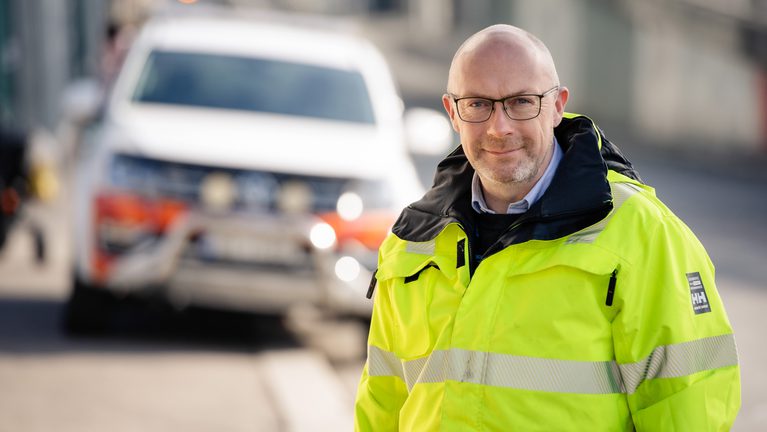
Fjellinjen has reduced phone support hours during the Christmas holidays. Read more here.
Every day, Fjellinjen registers more than a million toll crossings at our 83 toll stations. This is what happens when you pass a toll station.

A lot has happened since 2008, when Fjellinjen phased out staffed toll stations and coin insertion. Then you had to stop your car, wind your window down and pay before you could continue your journey – unless you had a subscription. The old arrangement required more than 200 employees to sit in a booth and operate the toll station.
Today, manual ticketing and coin insertion have been replaced by advanced technology that registers the toll crossings automatically. Cameras are mounted in both directions of travel and take pictures of both the front and back of cars. The registration number can be clearly seen in the pictures.
Any footpaths or cycle paths next to the toll station are also covered by cameras. This means you cannot “sneak up” on the barrier without being filmed.

12–14 metres before you drive through the toll station, your car is photographed and the car and its registration number are registered, unless you have a tag with a valid AutoPASS subscription.
The picture of the driver and passengers is pixelated to preserve privacy. You can read more about this in Fjellinjen’s privacy policy.
The toll station’s sensor will then search for an AutoPASS tag in the car that has been registered. Finally, it will compare the tag number on the AutoPASS tag against the car registration number.
If the AutoPASS tag does not match the registration number, the crossing will be treated as a full-price crossing. You can read more about this below.
The information is transferred to a national data core system for toll stations Owned and operated by the Norwegian Public Roads Administration.
Fjellinjen’s toll stations use DSRC technology to read AutoPASS tags. DSCR, which stands for Dedicated Short Range Communication, is a wireless communication solution that uses radio waves to enable the tags to communicate with tag readers. It covers a zone of 12 metres from the toll station and spans the entire road width.

If the registered car has a valid AutoPASS subscription, the national core system will identify your AutoPASS subscription provider.
All toll crossings are recorded as a single transaction. Details of the time, place and price of the crossing will then be sent to your AutoPASS provider. Your subscription provider will also be informed of the discount on the crossings and the monthly cap.
If your tag runs out of battery, you will still receive your AutoPASS discount. The cameras (attempt to) match the AutoPASS subscription to the registration number. You can find an overview of all the AutoPASS subscription providers you can use here.
With an AutoPASS subscription, everything is taken care of automatically, and your subscription provider sends you an invoice. The subscription provider forwards the payment to the toll road operators, but retains a 1.75 per cent administration fee. The percentage is established in official regulations.
Vehicles without an AutoPASS subscription are charged full-price. The relevant toll company is responsible for invoicing and collecting tolls from full-price customers.
Full-price customers do not qualify for the monthly cap. They also do not receive a 20 per cent discount per toll crossing, as they would with an AutoPASS subscription.
The process is slightly different than with an AutoPASS tag. The pictures of the car that are taken are processed in the same computer system as cars with an AutoPASS tag, but are then filtered out and run through an automatic image recognition process which is also connected to the National Public Roads Administration’s national core system.
Any pictures that cannot be identified automatically will be reviewed by a member of staff.
The owner of the car is invoiced for the toll crossing.
Sources:
Vehicles transported on a trailer or as part of a car transport should not be charged toll fees. However, there have been instances where vehicles being transported on a trailer have been incorrectly billed for toll crossings.
To avoid the risk of receiving a toll invoice for transported vehicles, you can do the following: